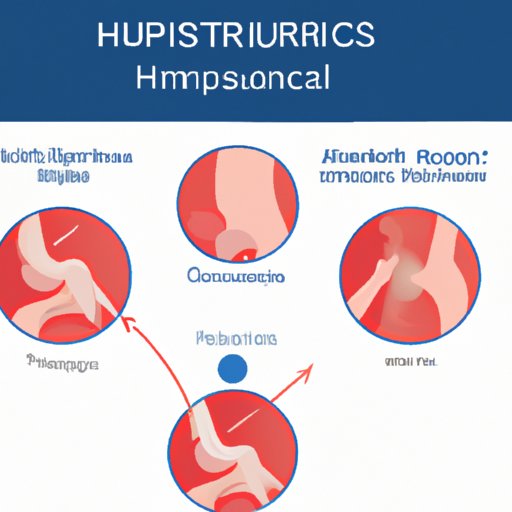Understanding Hip Bursitis: Symptoms, Treatment Options, and Prevention
Hip bursitis is a common condition that affects people of all ages and activity levels. It occurs when the bursae, small fluid-filled sacs located around the hip joint, become inflamed and irritated. This can cause pain and tenderness in the hip, making it difficult to perform daily activities or participate in physical exercise. In this article, we will discuss the causes, symptoms, treatment options, prevention, and surgical procedures related to hip bursitis.
What is Hip Bursitis?
The hip joint is a complex structure that is surrounded by multiple bursae, which serve to cushion and reduce friction between the bones, muscles, and tendons. When these bursae become inflamed and irritated, it can cause a condition known as hip bursitis.
There are many different factors that can contribute to the development of hip bursitis. Overuse or repetitive activities, such as running or cycling, can put excessive strain on the hip joint and lead to inflammation of the bursae. Direct trauma or injury to the hip, such as a fall or impact during sports, can also cause hip bursitis. In addition, inflammatory conditions, such as rheumatoid arthritis or gout, can increase the risk of developing hip bursitis.
Symptoms of Hip Bursitis
The most common symptom of hip bursitis is pain and tenderness in the hip, which may radiate down the thigh or buttock. Inflammation of the bursae can also cause swelling, redness, and warmth around the hip joint. Individuals with hip bursitis may experience difficulty with walking, running, or climbing stairs, and they may have a limited range of motion in the hip. The pain associated with hip bursitis can range from mild to severe, depending on the severity of the condition.
Treatment Options for Hip Bursitis
Fortunately, there are many effective treatment options available for individuals with hip bursitis. Rest and self-care measures, such as ice and heat therapy and stretching exercises, can help to reduce inflammation and alleviate pain. Over-the-counter medications, such as nonsteroidal anti-inflammatory drugs (NSAIDs) and corticosteroid injections, can also be effective at reducing inflammation and pain. Physical therapy can help to improve flexibility and strength around the hip joint, which can reduce the risk of future injury. Alternative therapies, such as acupuncture or chiropractic care, may also be beneficial for some individuals.
Preventing Hip Bursitis
Preventing hip bursitis involves maintaining a healthy weight and avoiding repetitive activities that strain the hip joint. Individuals who participate in physical activities should be sure to stretch properly before exercising and wear appropriate footwear to reduce the risk of injury. If an individual experiences any discomfort or pain in the hip joint, they should take a break from physical activity and seek medical advice.
The Link Between Hip Bursitis and Other Conditions
Hip bursitis may be related to other inflammatory conditions, such as arthritis or gout. Individuals with a family history of these conditions or who have experienced previous joint inflammation may be at an increased risk for hip bursitis. It is important to speak with a healthcare provider if an individual has any concerns or symptoms related to hip bursitis.
Surgery for Hip Bursitis
In some cases, surgery may be necessary to treat hip bursitis. Indications for surgery may include severe or persistent pain and inflammation despite conservative treatments. There are different types of surgical procedures that may be used to treat hip bursitis, such as bursectomy, hip arthroscopy, or hip replacement. Recovery and rehabilitation depend on the type of procedure performed and should be discussed with a healthcare provider.
Conclusion
Hip bursitis is a common condition that can cause pain and discomfort for individuals of all ages. Fortunately, there are many effective treatments available, including rest and self-care measures, over-the-counter medications, physical therapy, and alternative therapies. Prevention involves maintaining a healthy weight, avoiding repetitive activities that strain the hip, and seeking medical advice if any pain or discomfort is experienced. Surgery may be necessary for severe or persistent cases of hip bursitis. With proper treatment and care, individuals with hip bursitis can return to their daily activities and participate in physical exercise with reduced pain and inflammation.
